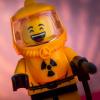| Welcome, Guest |
You have to register before you can post on our site.
|
| Online Users |
There are currently 247 online users.
» 0 Member(s) | 243 Guest(s)
Applebot, Bing, Google, Yandex
|
|
|
| LDraw MOCs at Fan Conventions |
|
Posted by: Orion Pobursky - 2019-07-25, 15:48 - Forum: LDraw.org Announcements
- Replies (9)
|
 |
I've requested (not yet approved) to have a LDraw MOC display at an upcoming AFOL convention. As such, I'd like to get as many images and models file as I can to showcase the efforts of our community at future fan events.
The rules for submission are:
- Must be public display appropriate
- Images must of a resolution that displays well on a 1080p monitor
- Videos are allowed subject to the above rules
- Pre-rendered images are desired but LDR files will be accepted.
- Author's real name (pen names are allowed) and email must be provided (can be done via PM).
Please post submissions to this thread or via PM.
Please create a new topic for discussion of the rules or other items.
|

|
|
| Lpub3D 2.3.13 Native Render |
|
Posted by: Nico71 - 2019-07-24, 8:40 - Forum: LDraw File Processing and Conversion
- Replies (30)
|
 |
Hello everyone,
On the good advice of Philo, I have started to test the new renderer of Lpub3D 2.3.12 and in deed, it is very fast comparing to ldview.
Therefore I have started to work on a new model using this one.
But I have a problem regarding the size of the model, size of the callout and the pli. I have noticed that the scale is not longer use and is replace now by fov camera and distance camera) but I do not understand how to work with it properly.
For my example, I have set : - Fov assembly : 20
- Distance : -270
- Native factor : -270 (I have found a topic by Trevor which explain that -270 is A4 scale =1)
- Fov pli : 30 (I want the part a bit smaller)
- Distance pli : -270
It works fine on the first step when the model is not too big, for instance :
![[Image: 223E7cZ.png]](https://i.imgur.com/223E7cZ.png)
But I already noticed that the size of the assembly step by step changes, as the model goes bigger (with more parts), the camera seems to dezooming. You can see it comparing the first step and the 4th, I have not change anything, just add the step. You can see also that the callout is too big, with the same value.
When it becomes to be very complicated is when the model is bigger, for instance on this picture :
![[Image: htbJjsR.png]](https://i.imgur.com/htbJjsR.png)
The mode is very small and the callout too big. So I want to change that but :
When I change the distance camera (for this step only), I have to put +400 to see the model in the page but the callout comes very very very big, so I change the distance camera for the callout but it did not work (lpub add the meta in the callout but then delete when it is regenerate).
So I change the fov for the callout but it do not work well (it changes the first step but not the second and sometimes make an error : image empty, check the fov to 30 default).
The other problem is when I change the distance camera for the assembly only in the step, when I comes to an other page, and go to the first one, the pli is very big (the whole page). So changing the distance factor is not a very good an reliable way.
I can change the fov on the assembly but I have to put 4 or less which tend to generate error.
So basically I want to set the size of the pli, set the size of the model (like the scale in ldview), by rendering the last step of the whole model. And for the first step when the model is smaller, play with the fov or distance.
It do not bother me that the camera auto zooming but this is pretty annoying of big step wich is too small and small step with is too big.
Therefore, If you have some clue or way to work with it, please tell me, I only want the proper way to work with it, because I think this new render is very interesting for rendering time. If I have to add meta on each step to have constant size or no problem, I will do. Or if I have a special configuration to do.
The most normal way to work for me, will that the camera not automatically zooming depending of the size of the model, in order the placement of the camera is only set by the fov and the distance, and if I want to zoom to see more or less, using the distance camera, but as I mentioned, it doesn't work like that. There are not many documentation of this new render and how to use.
Nicolas
ps : if you do not see the image, please tell me.
|

|
|
|